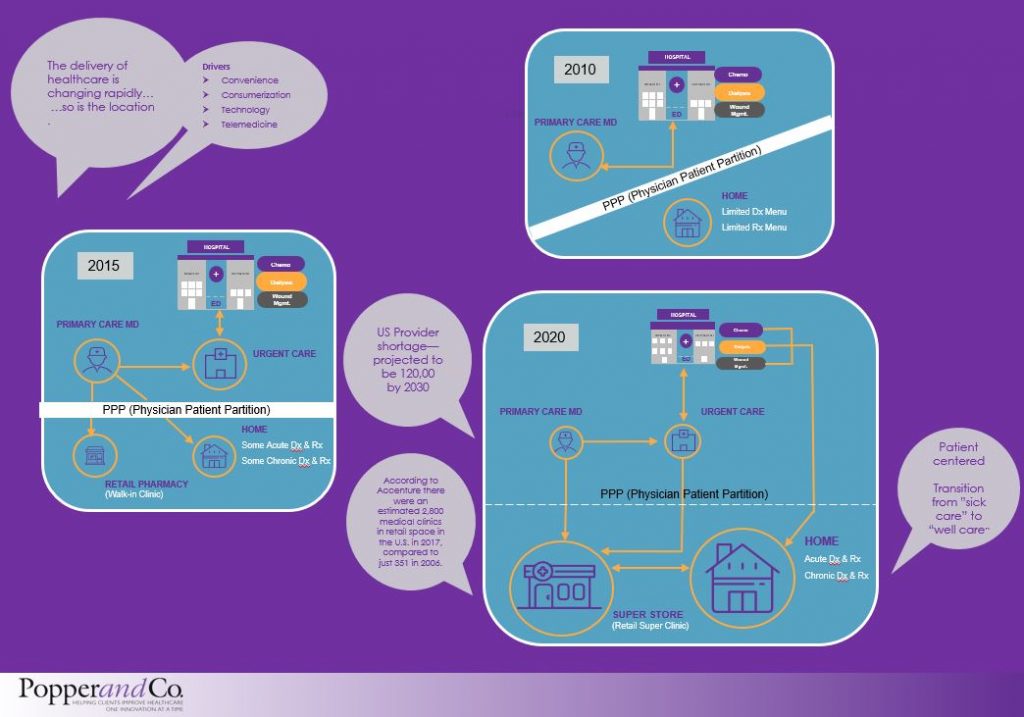19 September
In the US, the shift in where care is rendered is practically seismic. Almost overnight it seems (5 years in real world terms), retail clinics have become an important part of primary care and convenience is certainly key.
To illustrate this phenomenon, and the relative importance of the participants in primary care delivery, Baltimore-based Caroline Popper and her colleagues at Popper and Company have created a graphic to define the shift and demonstrate the evolution of the Point of Care in the US. The image depicts the doctor’s office losing importance, free standing urgent care – a staple, hospitals shrinking, retail clinics growing and the home becoming increasingly important.
Caroline developed the concept of the Physician Patient Partition (PPP), somewhat analogous to the Blood Brain Barrier (BBB) – the latter typically impenetrable, but now quite porous, as is today’s PPP with sophisticated processes like dialysis taking place in the home.
Last month, Caroline attended the 2019 AACC laboratory conference and was disappointed to find many PoC instruments still stuck in a 2010 paradigm.
Indeed, the PoC is not where it used to be, and this should create many opportunities to innovate in order to meet the health needs of consumers conveniently in their homes: Patient centered care (actually PERSON-CENTERED care) for managing chronic conditions and for promoting health and wellness.
Caroline points out that “It would be interesting to discuss the status of the Australian PoC and compare trends. I suspect the similarities vastly outweigh the differences: consumer engagement, demand for efficiency and convenience, cost constraints…are indeed global phenomena.”
Evolution of the Point of Care in the US




